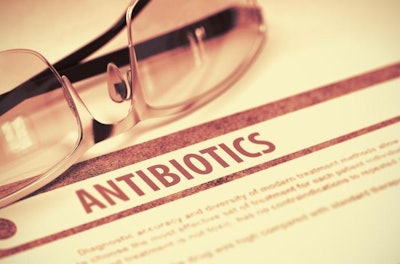
As new rules governing the use of antibiotics in livestock and poultry production come into force in the U.S., producers are increasing the use of vaccines and improving their sanitation and biosecurity.
These are the results of a recent study, “New Strategies for Health and Performance in US Livestock and Poultry Production,” by Brakke Consulting Inc. The study was conducted among beef, dairy, swine and poultry producers in late 2016, just before the new antibiotic regulations and the Veterinary Feed Directive became effective January 1, 2017.
The study found that, in response to the loss of shared use antibiotics, vaccination protocols and improved sanitation were the top two strategies for 70 percent or more of all producers. Other strategies included reduced co-mingling of animals/birds, changes in feed additives, changes in facilities, use of immune modulators and changes in genetics. Results are shown below:
| Strategy | Percent of producers |
| Vaccine protocols | 74% |
| Sanitation/biosecurity | 70% |
| Reduced moving, co-mingling | 53% |
| Feed additives | 53% |
| Facilities, animal/bird density | 49% |
| Immune modulators | 38% |
| Genetics | 34% |
Changes in feed additives
The study found that, among the changes in feed additives, the most common was the increased use of direct-fed microbials, or probiotics. Other changes included increased use of enzymes, prebiotics, oligosaccharides, organic acids and phytogenics.
A recent survey by WATT Global Media revealed that when it comes to replacing antibiotics, probiotics are always in the mix of additives. Sometimes, they are used even in the presence of antibiotics, assuming antibiotics do not kill them.
Organic acids can be free, coated, straight or salts, and have been shown to possess the strongest antibacterial activity. Not all work the same as their site of action depends on gut pH and the acid’s pKa value. Also, they have different potency against the many and varied types of bacteria in the gut. And, of course, inclusion rate is not the same for all organic acids.
Phytogenics are not used as widely as organic acids and probiotics, but they are making a very strong entrance in the U.S. market. All together they are viewed, correctly or not, as supplementary to organic acids, if only because clever marketing placed them as potentiating the action of organic acids. This might be true, but is not always the case. For example, some phytobiotic compounds may interfere with the immune system, whereas others stimulate the digestive system. In most cases, modern products are protected, as some of their comprising elements can be very volatile.
More than 90 percent of poultry producers indicated that they were changing one or more feed additives in response to the loss of antibiotics, more than any other species group.
Preparing for changes
Half of producers said they had already made changes to their operations to prepare for this year’s new laws, but about three-fourths indicated that they were ready for the changes. The poultry sector was the most prepared.
There was widespread concern about the potential impact of the loss of shared use antibiotics. Only 38 percent of producers believed they would be able to maintain production and profit levels without them.

















